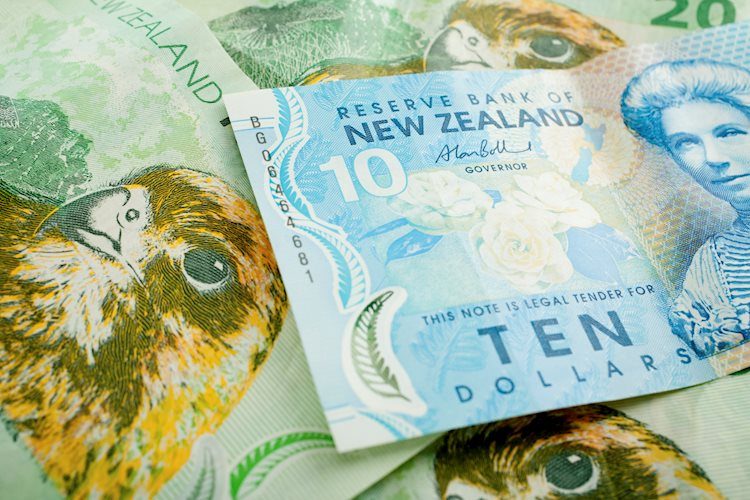- NZD/USD gains ground due to risk-on sentiment amid dovish Fedspeak.
- Minneapolis Fed President Kashkari anticipates additional rate cuts in 2024, although expects them to be smaller than previous reductions.
- The New Zealand Dollar found support from a range of stimulus measures implemented by its close trading partner, China.
NZD/USD extends its upside for the second consecutive day, which could be attributed to the improved risk sentiment following the dovish sentiment surrounding the Federal Reserve’s (Fed) policy outlook. The NZD/USD pair trades around its monthly high of 0.6280 level during the Asian session on Tuesday.
The US Dollar (USD) receives downward pressure following the dovish Fedspeak. Minneapolis Fed President Neel Kashkari said on Monday that he believes there should be and will be additional interest rate cuts in 2024. However, Kashkari expects future cuts to be smaller than the one from the September meeting. Additionally, Chicago Fed President Austan Goolsbee noted, “Many more rate cuts are likely needed over the next year, rates need to come down significantly,” per Reuters.
Federal Reserve policymakers anticipate rate cuts amounting to 50 basis points by the end of 2024. Meanwhile, the CME FedWatch Tool indicates a 50% chance of a total 75 basis point reduction by the end of the year, lowering the Fed’s rate to a range of 4.0-4.25% by year-end.
Minneapolis Fed President Neel Kashkari said on Monday that he believes there should be and will be additional interest rate cuts in 2024. However, Kashkari expects future cuts to be smaller than the one from the September meeting. Additionally, Chicago Fed President Austan Goolsbee noted, “Many more rate cuts are likely needed over the next year, rates need to come down significantly,” per Reuters.
The New Zealand Dollar (NZD) gained support from a series of stimulus measures introduced by China, New Zealand’s largest trading partner. The People’s Bank of China (PBoC) provided CNY 74.5 billion in liquidity to the banking system through a 14-day reverse repo, lowering the rate from 1.95% to 1.85%. Additionally, the PBoC injected CNY 160.1 billion via a 7-day reverse repo, maintaining the rate at 1.7%.
The Reserve Bank of New Zealand (RBNZ) remains on track for additional rate cuts this year, with markets fully anticipating another 25 basis points reduction in October. Recent data showed that the economy contracted in the second quarter, highlighting persistent economic weakness in New Zealand.
New Zealand Dollar FAQs
The New Zealand Dollar (NZD), also known as the Kiwi, is a well-known traded currency among investors. Its value is broadly determined by the health of the New Zealand economy and the country’s central bank policy. Still, there are some unique particularities that also can make NZD move. The performance of the Chinese economy tends to move the Kiwi because China is New Zealand’s biggest trading partner. Bad news for the Chinese economy likely means less New Zealand exports to the country, hitting the economy and thus its currency. Another factor moving NZD is dairy prices as the dairy industry is New Zealand’s main export. High dairy prices boost export income, contributing positively to the economy and thus to the NZD.
The Reserve Bank of New Zealand (RBNZ) aims to achieve and maintain an inflation rate between 1% and 3% over the medium term, with a focus to keep it near the 2% mid-point. To this end, the bank sets an appropriate level of interest rates. When inflation is too high, the RBNZ will increase interest rates to cool the economy, but the move will also make bond yields higher, increasing investors’ appeal to invest in the country and thus boosting NZD. On the contrary, lower interest rates tend to weaken NZD. The so-called rate differential, or how rates in New Zealand are or are expected to be compared to the ones set by the US Federal Reserve, can also play a key role in moving the NZD/USD pair.
Macroeconomic data releases in New Zealand are key to assess the state of the economy and can impact the New Zealand Dollar’s (NZD) valuation. A strong economy, based on high economic growth, low unemployment and high confidence is good for NZD. High economic growth attracts foreign investment and may encourage the Reserve Bank of New Zealand to increase interest rates, if this economic strength comes together with elevated inflation. Conversely, if economic data is weak, NZD is likely to depreciate.
The New Zealand Dollar (NZD) tends to strengthen during risk-on periods, or when investors perceive that broader market risks are low and are optimistic about growth. This tends to lead to a more favorable outlook for commodities and so-called ‘commodity currencies’ such as the Kiwi. Conversely, NZD tends to weaken at times of market turbulence or economic uncertainty as investors tend to sell higher-risk assets and flee to the more-stable safe havens.
Read the full article here

